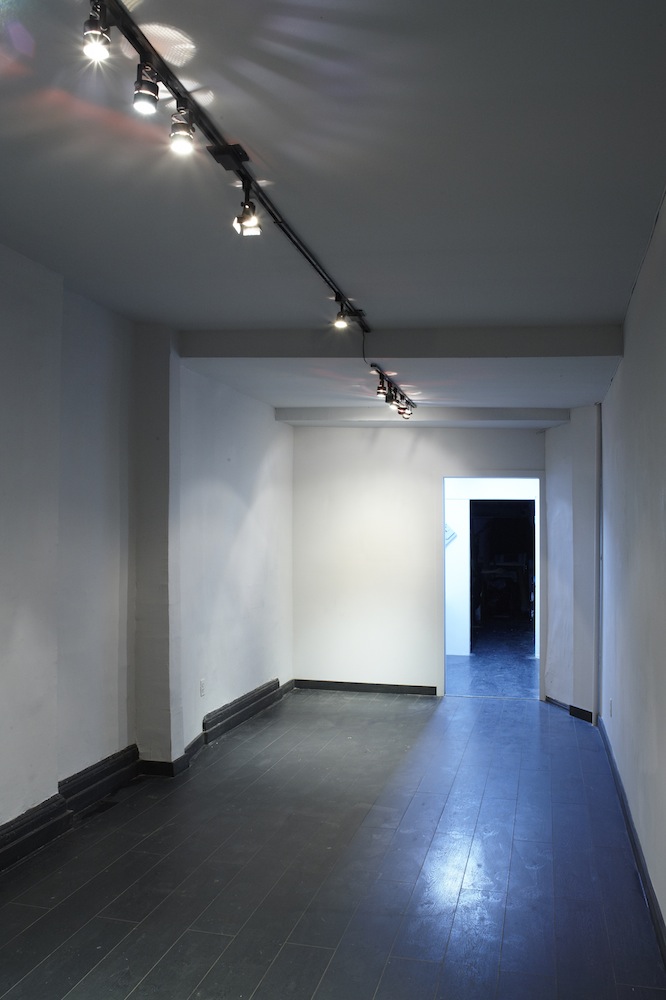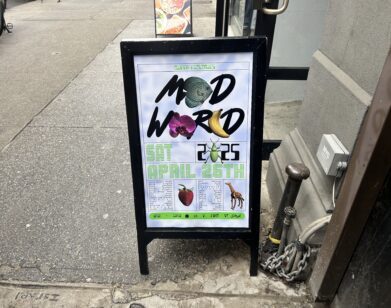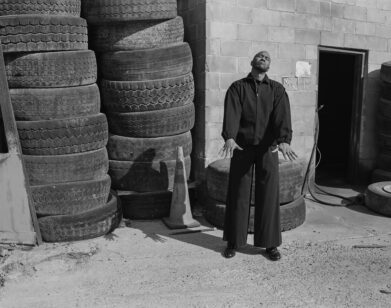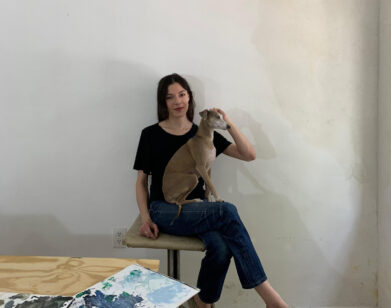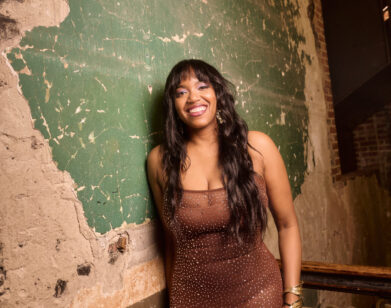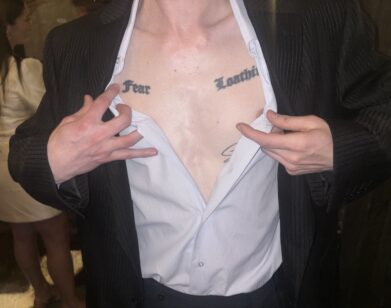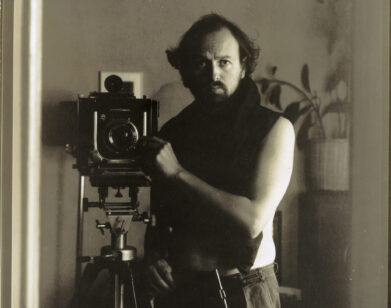How to Make a Scene, or Not
In the months following overachievement and over-indulging at Art Basel Miami Beach in December, most New York galleries go into hibernation for the winter months, resting up for spring art fairs. But, in a whirl of rapid-fire curating, Kai Matsumiya has organized a marathon of 11 mini-solo exhibitions to take place in the next five weeks at his eponymous Lower East Side gallery. Titling the show “Don’t Make a Scene,” Matsumiya wants to explore the notion of a “scene” as a social phenomenon that can be spontaneously formed or deliberately branded–and a center of activity that grapples with attention, whether seeking or ignoring it.
Matsumiya arranged about two years’ worth of shows within the time of one typical gallery show cycle; he never hesitated about the ambitious undertaking, though in retrospect, “I have no idea what compelled me to do this,” he jokes. The initial idea, in part, was his want to exhibit a number of artists he is enthusiastic about in a solo format, rather than packing them together in a group show. “February used to be when experimental exhibitions had taken place–and in which new forms of critical engagements were encouraged–but it’s become a time for whatever lazy group shows. For me, it’s also fun doing the wrong thing in the best ways possible.”
The gallery is shaped like a shotgun house, with three adjacent, receding showrooms, and the entryway is about the size of the two outlying rooms. To be as egalitarian as possible, Matsumiya will keep the first room empty, while the farther two rooms will contain different pairs of artists throughout. Distinguishing from the official opening and closing, he has dubbed the in-between switches “middlings,” “reminding us that our understanding of the course of the exhibition could in fact be an arbitrary construction,” he says. The artists range vastly in training, from self-taught to holding an MFA, and in style, from painting, to video, to installation.
Below, we’re featuring brief interviews with each of the 11 artists, in which they discuss their backgrounds, artworks, and thoughts on the ubiquitous, often notorious “scene.”
February 7 to February 11: Sam Gordon and Jake Ewert
NAME: Sam Gordon
AGE: 42
HOMETOWN: San Francisco, California
CURRENTLY BASED: Brooklyn, New York
ARTISTIC TRAJECTORY: I heard the boyfriend of an artist I know talking about artists that either grew up always being an artist, creative, etcetera…and those who came to it later in life, maybe after a liberal arts school. He pointed out some very successful artists who were the latter, and his idea of where art is heading. I was the former; I went to RISD for undergrad. I worked for Robert Gober for three years, which I’ve come to consider my MFA of sorts, and made a 100 hour-long (and counting) video piece about contemporary art, which is something of a PhD.
PLAN FOR “DON’T MAKE A SCENE”: A selection of works on paper from various periods [1996-2016] paired with folk art, thrift store finds, and souvenirs from abroad from my personal collection. This exhibition functions as an addendum to “World Made By Hand” at Andrew Edlin Gallery [taking place from February 7 to March 19], which I helped to conceive and organize.
THE LAST “SCENE” YOU CONSIDERED YOURSELF A PART OF: I think most artists, even if they are actually part of a scene, feel like loners or oddballs. I have close friends who are artists and peers I am in dialogue with, though I don’t feel part of any scene. I have been accused of being part of the “velvet mafia”—literally scene as pejorative.
ARE SCENES PASSÉ? Yes, so maybe they are back in.
CURRENT AND UPCOMING PROJECTS: “SITUATIONS,” which is a collaborative effort founded by gallerist Jackie Klempay and artists Mariah Robertson, Jacob Robichaux, and me, to develop and present curatorial projects. Our presentation at the recent Outsider Art Fair—”Tabboo! vs. Henry Darger”—was a mini-exhibition conceived specifically for the context of this fair. We juxtaposed works by two visionary, idiosyncratic, and prolific artists artists: Henry Darger, one of the most celebrated outsider artists, and Tabboo! (Stephen Tashjian), a legendary underground artist and creative force whose vision expands across disciplines: performance, theater, cabaret, video and film, music, illustration, and graphic design.
For the last three years I have been collaborating with NADA on The Contemporary Series, producing events that bridge the gap and draw connections between art and other media. Contemporary Fashion (2015) is now screening at the New Museum in Cheryl Donegan’s show. This is across the street from the show I helped conceive and organize at Andrew Edlin Gallery, and along with Kai’s show, will make for three concurrent curatorial hybrid projects of mine on the Lower East Side.
NAME: Jake Ewert
AGE: 40
CURRENTLY LIVE: Queens, New York
DESCRIBE YOUR PRACTICE IN THREE SENTENCES: I’m a painter. The work is basically abstract, but is more like simple gestures with familiar materials that point to things I’m interested in. So, I guess it’s really not so abstract.
ARTISTIC TRAJECTORY: I went to art school. I moved to New York about 15 years ago. It took a few years to shrug off school and adjust to life here. There was a shift in my work about seven or eight years ago, and that’s when I started making the things I am working on now.
PLAN FOR “DON’T MAKE A SCENE”: Kai Matsumiya’s is a very idiosyncratic space, so it’s more about experimenting and looking for a specific effect, and less about presentation… The project has a great energy, like the gallery itself.
WHAT IS THE NEW YORK SCENE? New York, especially the art world, is tribal. I think that’s how scenes form—from successful tribes. There’s always one forming and another fading away.
HOW YOU PASSED THE TIME DURING WINTER STORM JONAS: Taking photos from my window. The wind made these unusual cones and meringue cornices on the cars and garbage cans on my street. It was spectacular.
February 13 to February 17: Walter Robinson and Graham Durward
NAME: Walter Robinson
AGE: 65
HOMETOWN: Wilmington, Delaware
CURRENTLY LIVES: Brooklyn, New York
DESCRIBE YOUR PRACTICE IN THREE SENTENCES: I’m an old-fashioned painter of still-lives, portraits, and figure studies. I try to make them look good, but I’m often tempted to make them arty. I’m constantly reminded that I need more practice, but I’ve always hated practicing, that’s why I can’t play the piano.
ARTISTIC TRAJECTORY: Want to hear something funny? When I was starting out, only squares went to art school. I showed my paintings in the 1980s, but then focused on writing and editing art magazines for several decades.
PLAN FOR “DON’T MAKE A SCENE”: Avant-garde art is all about being bad, so I thought I’d do something healthy.
WHAT ABOUT THE FAST INSTALL AND DEINSTALL? In 1983 Carlo McCormick organized two weeks of one-day-long art shows–14 in all–at the Limbo Lounge in the East Village. That’s when I realized that the scene had something.
WHAT IS THE NEW YORK SCENE? It’s no secret, it’s huge and open—galleries and museums.
ARE SCENES PASSÉ? Doubt it.
HOW YOU PASSED THE TIME DURING WINTER STORM JONAS: Orgies, what else?
LAST TIME YOU LEFT NEW YORK CITY: You don’t want to know.
CURRENT AND UPCOMING PROJECTS: One day at a time, please.
OTHER THOUGHTS: Peace and love.
NAME: Graham Durward
HOMETOWN: I’m from Scotland. We didn’t really have scenes back there, more like scenarios we created for ourselves—the do-it-yourself culture that becomes a community. We made our own clubs and music and fashion and art too. But that was then, and now it’s different [in New York]—there, too, I imagine. Its economical isn’t it, or is it? It’s a choice.
CURRENTLY LIVES: New York, New York
DESCRIBE YOUR PRACTICE IN THREE SENTENCES: My practice? A bit sacred and a bit profane. Conceptual but potentially excessive.
ARTISTIC TRAJECTORY: I went to art school and the Whitney Independent Study Program. I like the Picabia prescription for art: “If you want to have clean ideas, change them as often as your shirt.” So, while keeping a keen eye on who I am, I like to play with how I represent myself and my ideas in my art.
WHAT IS THE NEW YORK SCENE? There are scenes which you can create or jump into, and then there are scenes which you can’t unless invited. Those are cliques. I like my own scenes.
OTHER THOUGHTS: Sometimes I like to think that painting should aspire to “the sanctity of the anonymous fuck,” but that’s a high standard. So, other times its fine to be a bit more casual, things should function on different levels, like life. But there are some impulses you can’t control. After all, it’s art, not business. I like to see people thinking through art, so I like to think people can see that in my paintings. It’s important for me that things are about more than one idea.
February 19 to February 23: Meredyth Sparks and Patrick Bradley
NAME: Meredyth Sparks
HOMETOWN: Knoxville, Tennessee
CURRENTLY LIVES: Queens, New York
DESCRIBE YOUR PRACTICE IN THREE SENTENCES: My work engages collage, textile, and photographic histories and is informed by a range of sources within radical politics, music, labor, and gender. Often, my layered collages, paintings, and sculptures exist somewhere between figuration and abstraction, combining found imagery—whether mundane or iconic—in conjunction with more ephemeral matter, such as light and shadow. Central to my process is the meticulous cutting away from and reconstruction of a found image, a term I call “extraction;” by foregrounding the gesture of the cut, “extraction” negotiates the space between material and abstract, and that which is perceived and which is implied.
ARTISTIC TRAJECTORY: I received a BFA from the University of Tennessee in Knoxville and an MFA from Hunter College. My work has taken many forms and covered disparate subject matter over the years. I have used direct and iconic images in my work, such as punk and new wave figures combined with collaged shapes cut from aluminum foil or shaped from glitter. I’ve also stitched mundane or everyday images of objects such as windows and accordion screens together with patterned textiles. With much of my work, I try not to be too obscure with my reference material—I tend to work with subjects that are culturally recognizable and try to make something interesting from something that might be considered well-traversed territory.
PLAN FOR “DON’T MAKE A SCENE”: I’m going to show some new sculptural pieces along with collage-based works. These sculptures are in keeping with some of the paintings I have made in the past few years, made with fabric and digital print on canvas on stretcher bars that have been reconfigured into new forms. They can be seen as abstracted figures that approximate portraiture.
THE LAST SCENE YOU CONSIDERED YOURSELF A PART OF, AND ARE SCENES PASSÉ? A scene seems to be something that’s understood only as a scene after the fact. In this sense, I don’t consider myself to have ever been a part of a scene.
NAME: Patrick Bradley
AGE: 49
HOMETOWN: Monroe, Louisiana
CURRENTLY LIVE: Brooklyn, New York
DESCRIBE YOUR PRACTICE IN THREE SENTENCES: I start with found wood and then work into it, using common tools of carpentry such as various saws, sandpapers, joint compounds, epoxies, wood fillers, routers, and drills to name a few. I begin by sawing lines into the wood and from there I may carve out certain areas to further develop compositions that draw from sources like architectural landscapes or photography. Some of the pieces are more raw and textural and happen by chance; others more polished, using fillers and surfacing materials and pigments.
ARTISTIC TRAJECTORY: I have been an artist basically since I was born. I went to college and obtained a degree in architecture. I felt it was the highest form of art, creating an artwork you could actually inhabit. I no longer practice building architecture, but I create virtual spaces on the Internet. Back in the early days of digital media, I learned Photoshop and that changed my life. Now, I am highly influenced by things that are happening in the technology and graphic design world. Photography, screen-printing, and photo collage are also passions of mine. My art has not always looked the same, but there is a common thread that exists throughout.
PLAN FOR “DON’T MAKE A SCENE”: It is my intention to create a conversation around the idea of opposites: larger more formal work in a smaller more informal context. The rough nature of the gallery space also alludes to the rough nature of the work, and its deeper origins of architecture, carpentry and sculpture.
ARE SCENES PASSÉ? I don’t know if passé is the right word, but I do feel like the huge impact of social media and the way life is now—a constant overstimulation of information—has pretty much done away with “scenes” of the past. It’s no longer necessary to actually go out and be a part of something. You can be a part of something from the comfort of your iPhone. I feel like the generation growing up in this way has a much different view of the world and how to participate in it.
LAST TIME YOU LEFT NEW YORK CITY: Last December to visit family for the holidays. I went to my hometown. My parents have a huge farm with lots of land and trees. It’s really beautiful.
February 25 to February 29: Tracy Molis and Christopher Schade
NAME: Tracy Molis
HOMETOWN: Los Angeles, California
CURRENTLY LIVE: Brooklyn, New York
DESCRIBE YOUR PRACTICE IN THREE SENTENCES: The archive telepathically replicating itself through my paintings. High contrast, low poly iconography. California structural film.
ARTISTIC TRAJECTORY: I’ve been painting for a long time, and moved to New York to get my MFA at Columbia. A studio visit conversation with Jutta Koether about Jack Goldstein’s legacy inspired me to turn to airbrush and make the cinematic-influenced paintings I continue to make now. I also spent a semester making formal, experimental videos and exhibiting them like sculpture. Since grad school I’ve worked in several mediums, but painting is my through-line.
I don’t remember a time in my life that I wasn’t making art. But for several years I pursued screen acting in Hollywood, reaching a defining moment when I was 18. I was the main actor in a student film and the crew had gotten high at their wrap party and jumped in the pool and exposed the film so we had to re-shoot it all. That second shoot, being under hot lights in a tiny apartment bathroom felt so needlessly stressful and aggravating, I didn’t know how I would come back from it. That night I went to my professor Yu Ji’s drawing session, and experienced a full immersion; all the furious anxiety from the day’s filming fell completely away. In a moment of equanimity I decided to drop acting and commit to visual art for good.
PLAN FOR “DON’T MAKE A SCENE”: Turning the gallery into a dark, ambient, and affective space with new iterations of paintings from my lexicon—the double lions, Xerox Alto, and masked sphinx.
HOW YOU PASSED THE TIME DURING WINTER STORM JONAS: My downstairs neighbor is actually a friend from high school art class, and a great painter. Over beer and oranges we talked about the semiotics of early ’00s fan-generated music websites and each other’s teenage band art. I have a closet somewhere full of drawings of Zach de la Rocha.
LAST TIME YOU LEFT NEW YORK CITY? I spent last October in Los Angeles for my first solo show at Night Gallery. That show was a homecoming in a way, as I spent formative years in the L.A. art world. My friends and I also hosted “Tracy’s Los Angeles West Coast Best Coast Pre-El-Niño Post-Health-Goth Garden Party” with cocktails like the “Yellow-bellied Sea Snake.” It was magical.
CURRENT AND UPCOMING PROJECTS: A solo exhibition at Clima Gallery in Milan this May.
NAME: Christopher Schade
AGE: 44
HOMETOWN: Austin, Texas
CURRENTLY LIVE: Greenpoint, Brooklyn
DESCRIBE YOUR PRACTICE IN THREE SENTENCES: I make psychologically charged landscape paintings. I am interested in creating states of perceptual and psychological dissonance. I’m working on complicating the visual read of the paintings by supporting some pictorial conventions while undermining others, by having multiple visual languages competing within one work and by having areas of the painting in direct contradiction or conflict with each other.
ARTISTIC TRAJECTORY: I decided I wanted to be a painter at age 11 in front of Goya’s “Black Paintings” at The Prado in Madrid. I still remember the sensation I had in that room that I was surrounded by these living things that had an immediacy that went beyond painting. It reminds me of what Philip Guston used to talk about when he said he wanted to make golems instead of paintings. I got my MFA from Yale in the late ’90s. My work has changed a lot in the 20 years since. It has gone from strictly figurative and imagined to almost all landscape with a perceptual grounding now, although the ambiguity of form is something that I’ve always been fascinated by.
THE LAST SCENE YOU CONSIDERED YOURSELF A PART OF: My wife Zoe, our friend Michael Lee, and I cultivated a community by starting a series of talks five years ago called “The Artist Lecture Series” in our studio in Greenpoint. It has been amazing to hear how people think about their work when they talk in depth among other artists with beers in hand.
HOW YOU PASSED THE TIME DURING WINTER STORM JONAS: Horror movies! We re-watched Romero’s 1973 The Crazies, among many others. The last scene is a doozy for anyone who is pregnant. My wife is six months now and she has an uncanny knack of finding movies where there are missing children or pregnant women fleeing from horrors and dying.
LAST TIME YOU LEFT NEW YORK CITY? Paris in the summer. We’ve gone for eight years and it’s always amazing to be there—quieter, slower, ridiculously beautiful, and with a radically different sense of time. A lot of my images at Kai’s show come out of places or ideas that have inspired me there. I drew in this crypt underneath Notre Dame that is a weird amalgam of ruins, Roman and medieval. You can’t tell where one time period starts and another stops and the whole thing looks like it was fused together by a nuclear bomb.
CURRENT AND UPCOMING PROJECTS: After the longest hiatus of my life from painting—four months to move studios—this week I am getting new canvases delivered and I can start up again.
March 2 to March 6: Craig Kalpakjian
NAME: Craig Kalpakjian
AGE: 54
HOMETOWN: Brooklyn, New York
CURRENTLY LIVES: I live in Manhattan, and I work in Ridgewood, Queens.
DESCRIBE YOUR PRACTICE IN THREE SENTENCES: Figure something out. Confuse as much as possible. Clarify.
ARTISTIC TRAJECTORY: Irregular.
PLAN FOR “DON’T MAKE A SCENE”: Show one new piece.
GAME PLAN FOR THE FAST INSTALL AND DEINSTALL? D.I.Y.
WHAT IS THE NEW YORK SCENE? Don’t stop for scenic overlooks…
THE LAST SCENE YOU CONSIDERED YOURSELF A PART OF: The Sump, a performance venue in Ridgewood.
ARE SCENES PASSÉ? The Scene Is Now!
ACTIVITIES OF NOTE DURING WINTER STORM JONAS: Performed with my band Das Audit (and Joe Gibbons) at the wedding of artists Tony Conrad and Paige Sarlin.
LAST TIME YOU LEFT NEW YORK CITY? Gave a visiting artist lecture at Bloomington, Indiana. Survived Hoosier hospitality intact.
CURRENT AND UPCOMING PROJECTS: A two-person art exhibit-and split LP-with Lonnie Holley.
OTHER THOUGHTS: Kai is doing something special.
March 8 to March 12: Lisa Blas
NAME: Lisa Blas
HOMETOWN: Los Angeles, California
CURRENTLY LIVE: New York, New York
DESCRIBE YOUR PRACTICE IN THREE SENTENCES: I produce medium to large-scale image and text works in collage. The collage material is made from painting sheets of paper in varying color striations and fields, then cutting the paper into abstract fragments or letters and affixing them to vellum and Arches supports. The work creates constellations where the fragility of nature meets civil unrest, across timelines within art history, social history and current events.
ARTISTIC TRAJECTORY: Since graduate school, I have focused steadily on making images that point to our social and cultural landscape, past and present. The study of art and history greatly defines this process. In painting and collage, I work with flat applications of transparent, opaque, or interference color. Throughout, I have collected newspapers and ephemera as research material that has become part of installations, small scale sculptures, projects in photography, and works on paper. My undergraduate education is rooted in history and political science, which explains why notions such as the palimpsest or “constellation,” in Walter Benjamin’s sense, are ever present in my work.
PLAN FOR “DON’T MAKE A SCENE”: An homage to the Belgian artist Guy Mees, and works on paper that channel Corita Kent, still life photography from the 19th century, and recent geographical erasures.
WHAT IS THE NEW YORK SCENE? The scene is always ephemeral, but I am a fan of ad-hoc events, discussions, and gatherings where thinking, engaging, and viewing, can take place impromptu and out loud.
THE LAST SCENE YOU CONSIDERED YOURSELF A PART OF: Brussels, where I lived and worked from 2009 to 2012, and experienced what I have come to define as a double foreignness. This reflected both the anonymity of growing up out west and the ethnic hybridity of my family of origin. Therefore, I recognized something familiar while living in Belgium that I never would have anticipated. Given that I’ve worked in a few different cities before moving to New York in the fall of 2013, each scene has played a part in my projects.
ARE SCENES PASSÉ? Definitely not! A scene is part of the scenery; it’s a backdrop. Everyone belongs to one or many backdrops.
HOW YOU PASSED THE TIME DURING WINTER STORM JONAS: Taking iPhone videos of the New York whiteout from my apartment window, reading my friend Miguel de Baca’s new book, Memory Work: Anne Truitt and Sculpture, and catching up on Sherlock episodes.
CURRENT AND UPCOMING PROJECTS: I produced an artist project for the forthcoming issue of Public Art Dialogue that will be published this spring, and I’m collaborating with another artist on a four-person exhibition based on the notion of correspondence.
“DON’T MAKE A SCENE” WILL BE ON VIEW AT KAI MATSUMIYA THROUGH MARCH 12, 2016.

